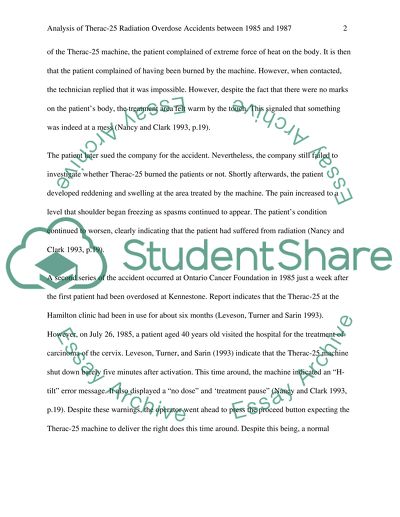Cite this document
(Analysis of Therac-25 Radiation Overdose Accidents between 1985 and 1987 Case Study Example | Topics and Well Written Essays - 2500 words, n.d.)
Analysis of Therac-25 Radiation Overdose Accidents between 1985 and 1987 Case Study Example | Topics and Well Written Essays - 2500 words. https://studentshare.org/technology/1476866-reliability-and-fault-tolerance
Analysis of Therac-25 Radiation Overdose Accidents between 1985 and 1987 Case Study Example | Topics and Well Written Essays - 2500 words. https://studentshare.org/technology/1476866-reliability-and-fault-tolerance
(Analysis of Therac-25 Radiation Overdose Accidents Between 1985 and 1987 Case Study Example | Topics and Well Written Essays - 2500 Words)
Analysis of Therac-25 Radiation Overdose Accidents Between 1985 and 1987 Case Study Example | Topics and Well Written Essays - 2500 Words. https://studentshare.org/technology/1476866-reliability-and-fault-tolerance.
Analysis of Therac-25 Radiation Overdose Accidents Between 1985 and 1987 Case Study Example | Topics and Well Written Essays - 2500 Words. https://studentshare.org/technology/1476866-reliability-and-fault-tolerance.
“Analysis of Therac-25 Radiation Overdose Accidents Between 1985 and 1987 Case Study Example | Topics and Well Written Essays - 2500 Words”. https://studentshare.org/technology/1476866-reliability-and-fault-tolerance.


